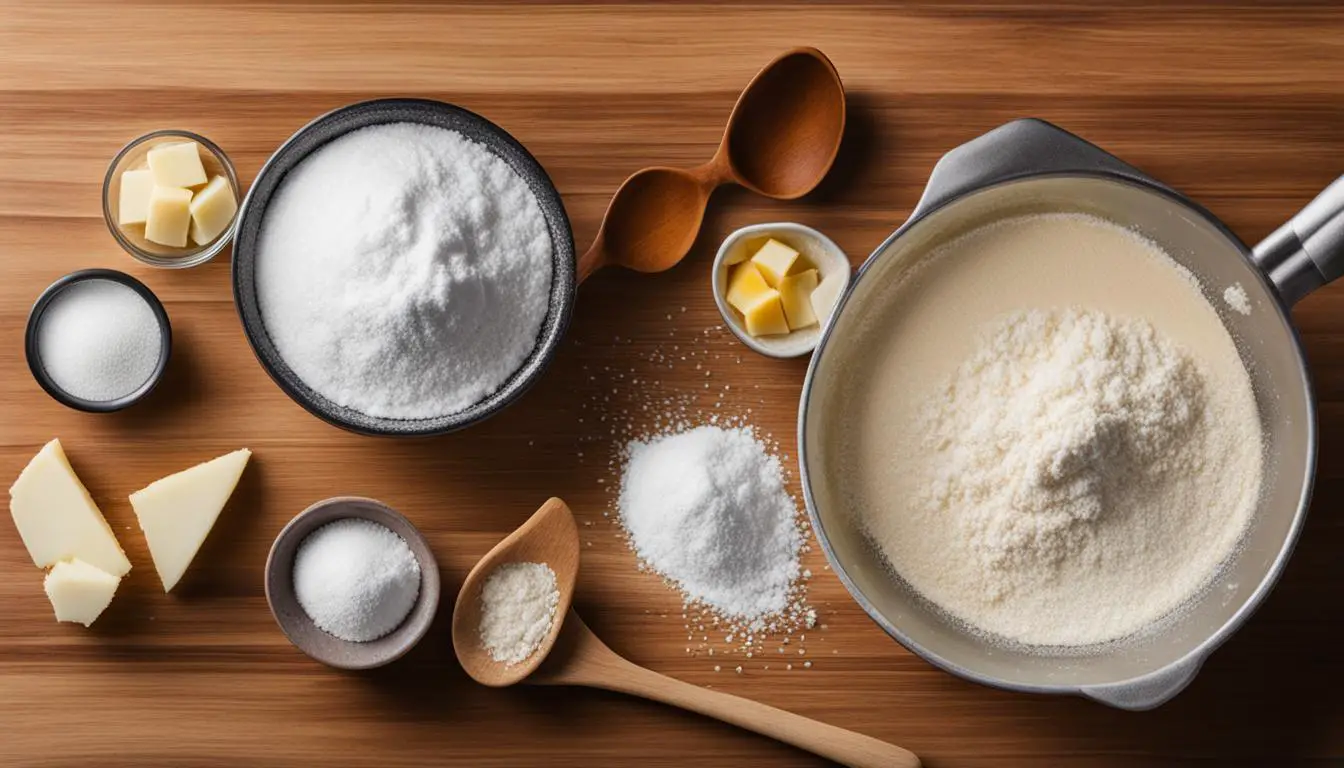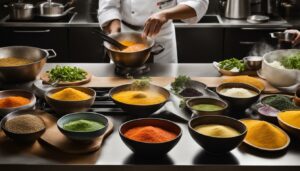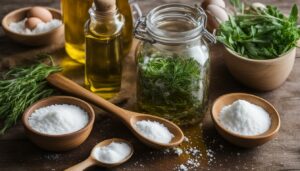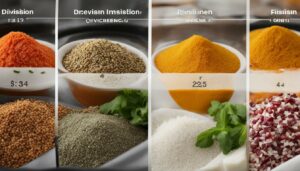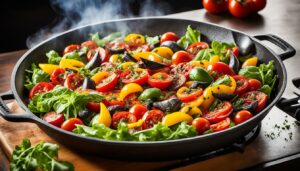Originally posted on January 9, 2024 @ 6:25 am
Have you ever come across a recipe that mentions “divided” after an ingredient? If you’re unsure about what it means, don’t worry! We’re here to clarify it for you.
When a recipe says “divided” after an ingredient, it simply means that the ingredient will not be added all at once. Instead, it will be used in multiple places throughout the recipe instructions. This is a technique used by recipe writers to indicate that the ingredient will be used in different amounts and at different times in the cooking process.
Understanding the concept of divided ingredients is crucial for accurately following a recipe and achieving the desired outcome. By paying attention to these instructions, you ensure that you use the divided ingredient correctly and enhance the flavor and texture of your dish.
Contents
- 1 Understanding the Purpose of “Divided” in Recipes
- 2 Examples of Divided Ingredients in Recipes
- 3 How to Properly Use Divided Ingredients
- 4 Tips for Handling Divided Ingredients
- 5 Understanding Variation in Recipe Formatting
- 6 Common Divided Ingredients in Recipes
- 7 Importance of Reading the Entire Recipe
- 8 Divided Ingredients in Baking Recipes
- 9 Benefits of Using Divided Ingredients
- 10 How Divided Ingredients Enhance Recipe Structure
- 11 Conclusion
- 12 FAQ
- 12.1 What does “divided” mean in a recipe?
- 12.2 Why do recipe writers use the term “divided”?
- 12.3 Can you provide examples of divided ingredients in recipes?
- 12.4 How should I use divided ingredients in a recipe?
- 12.5 Any tips for handling divided ingredients?
- 12.6 How can recipe formatting vary when it comes to divided ingredients?
- 12.7 What are some benefits of using divided ingredients?
- 12.8 How do divided ingredients enhance recipe structure?
- 12.9 Why is it important to read the entire recipe when using divided ingredients?
- 12.10 How are divided ingredients commonly used in baking recipes?
- 12.11 What is the importance of using divided ingredients in recipes?
- 13 Source Links
Key Takeaways:
- Divided ingredients are used in recipes to indicate that an ingredient will not be added all at once.
- These ingredients are used in different amounts and at different times in the cooking process.
- Paying attention to divided ingredients ensures you use them correctly and achieve the desired outcome.
- Reading the entire recipe before starting is crucial for understanding the usage of divided ingredients.
- Divided ingredients enhance the flavor and texture of the dish, bringing complexity and balance.
Understanding the Purpose of “Divided” in Recipes
The term “divided” in a recipe serves as a helpful indicator for cooks that an ingredient will be used in more than one place. Instead of listing the ingredient multiple times in the recipe’s list, it is mentioned once with the instruction “divided.” This convention streamlines the ingredient list, making it more concise and easier to follow.
When an ingredient is divided, it means that it will be used in separate ways throughout the recipe instructions. This can involve using different amounts in different steps or incorporating the ingredient at various stages of cooking. By dividing the ingredient, recipe writers can ensure that each use is precise and contributes to the overall flavor and texture of the dish.
The purpose of using “divided” in recipes is to provide clear and efficient instructions while maintaining the integrity of the ingredient list. It helps cooks understand how a specific ingredient should be used and prevents confusion or errors that could occur if an ingredient were listed multiple times with varying amounts.
For example, a recipe could include the instruction: “1 cup of diced onions, divided.” This indicates that the onions will be used in different parts of the recipe, such as sautéing a portion at the beginning and then adding the rest as a garnish near the end.
The use of “divided” in recipes allows for a more streamlined and organized cooking experience. It ensures that ingredients are used correctly and that the final dish has a well-balanced flavor and texture.
Examples of Divided Ingredients in Recipes
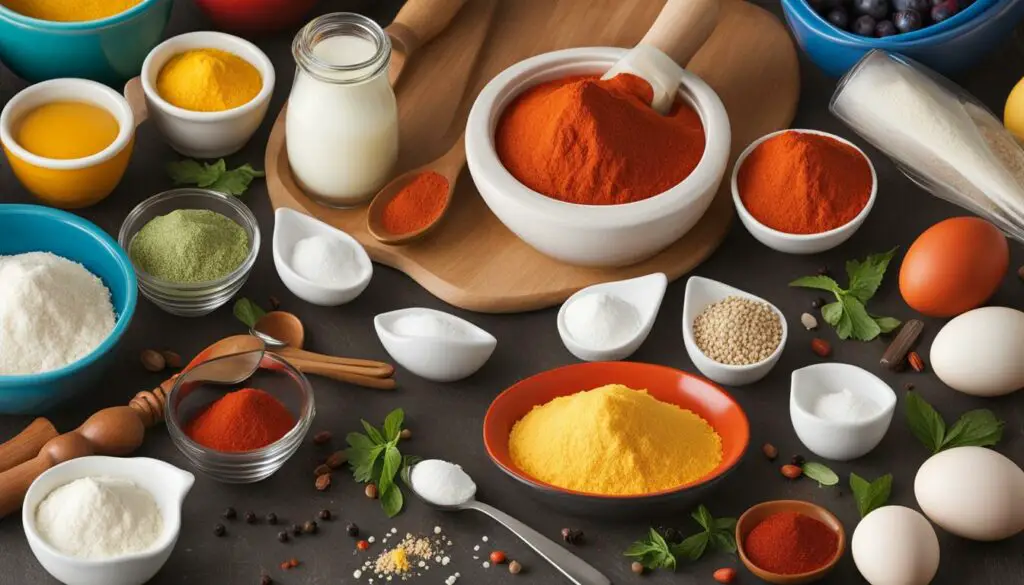
Divided ingredients can be found in various recipes, adding depth and complexity to dishes. This technique involves using an ingredient in different amounts and at different stages of the cooking process. Let’s explore some examples of recipes that utilize divided ingredients:
Parmesan Cheese
One classic example is a recipe that calls for “1 cup of Parmesan cheese, divided.” In this case, a portion of the cheese is used to enhance the flavor of a particular component of the dish, such as a sauce or filling, while the remainder is reserved for a finishing touch. The divided Parmesan cheese adds both richness and a savory kick to the overall recipe.
Butter
Another common divided ingredient is butter. For instance, in a macaroni and cheese recipe, you might find the instruction, “6 tablespoons of butter, divided.” Here, some of the butter is used to create a creamy cheese sauce, while the rest is melted and combined with breadcrumbs to create a deliciously crisp topping. The divided use of butter in this recipe ensures a perfect balance of flavors and textures.
Spices
Spices are also frequently divided in recipes to enhance the complexity of flavors. In a curry recipe, you might come across instructions like “1 teaspoon of cumin, divided.” This means that a part of the cumin is added earlier in the cooking process to infuse the base flavors, while the remaining portion is introduced later to bring a fresh burst of aroma and taste.
Herbs
Similarly, herbs are often divided to maximize their impact on a dish. Take a recipe for herbed roasted chicken, for example. It might specify “2 tablespoons of fresh rosemary, divided.” The first portion of rosemary is typically used to season the chicken before roasting, while the remaining herbs are added toward the end to preserve their vibrant flavor and aroma.
These examples illustrate the versatility and creative potential of divided ingredients in recipes. By using ingredients in different ways throughout the cooking process, you can elevate the taste, texture, and overall appeal of your dishes.
Image: A visually appealing depiction of divided ingredients, representing the concept discussed in this section.
How to Properly Use Divided Ingredients
When it comes to using divided ingredients in recipes, it’s crucial to follow the instructions carefully to achieve the desired outcome. Here are a few tips to help you use divided ingredients properly:
- Read the entire recipe: Before you begin cooking, take the time to read through the entire recipe. Pay special attention to any instructions regarding divided ingredients.
- Understand the usage: Make sure you understand how the divided ingredient should be used. Note the specific amounts and at which steps they need to be added during the cooking process.
- Measure accurately: To ensure the correct proportion of the divided ingredient, measure out the total amount before dividing it according to the recipe’s instructions. This will help you maintain accuracy in your cooking.
- Follow the steps: As you cook, follow the recipe’s instructions precisely, adding the divided ingredient at the specified amounts and stages. This will ensure that the flavors and textures develop as intended.
By adhering to these guidelines, you’ll be able to use divided ingredients effectively and create dishes that are flavorful and well-balanced.
Tips for Handling Divided Ingredients
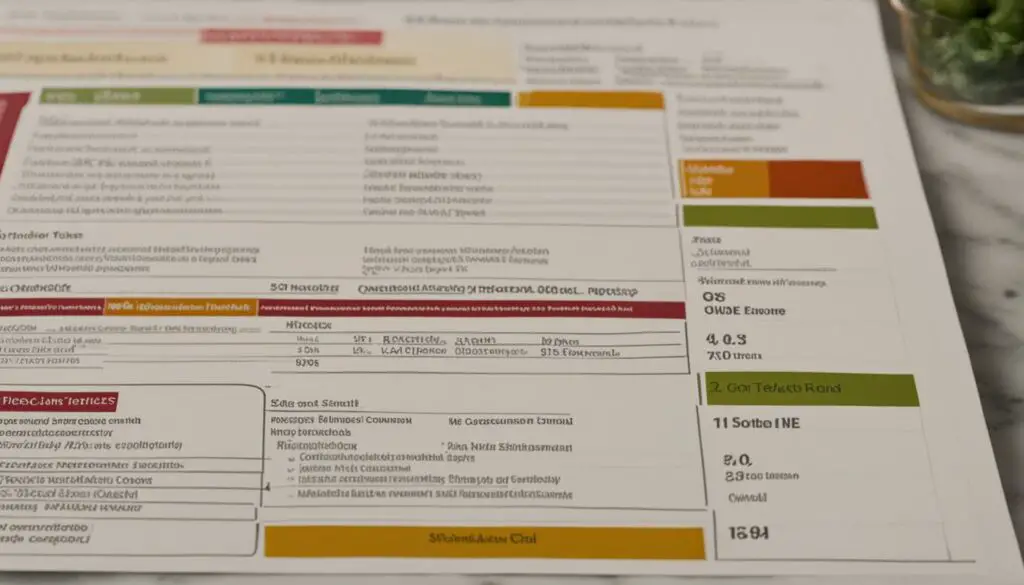
Successfully handling divided ingredients is essential to ensure the accuracy and quality of your recipe. Here are some helpful tips to navigate the process:
- Read the entire recipe: Before you begin cooking, take the time to thoroughly read the entire recipe. This will allow you to familiarize yourself with the instructions, including how the ingredient will be divided. Understanding the recipe as a whole will help you plan and execute each step effectively.
- Take your time when measuring: Accurate measurement is crucial when handling divided ingredients. It’s important to measure out the divided portion carefully to avoid adding too much or too little. A simple mistake can significantly impact the flavor and consistency of your dish, so make sure to double-check your measurements.
- Follow the recipe instructions: Pay close attention to the recipe’s instructions regarding the divided ingredient. Note the specific amounts and at which steps they should be added. It’s crucial to follow these instructions accurately to achieve the desired outcome. Dividing the ingredient is an intentional technique designed to enhance the flavor and texture of the dish, so it’s essential to use it as directed.
Remember, the word “divided” serves as a reminder to review the recipe and add the correct amount at the right time. By implementing these tips, you’ll be able to handle divided ingredients with confidence and create delicious dishes every time.
Check out this helpful image illustrating the process of handling divided ingredients:
Understanding Variation in Recipe Formatting
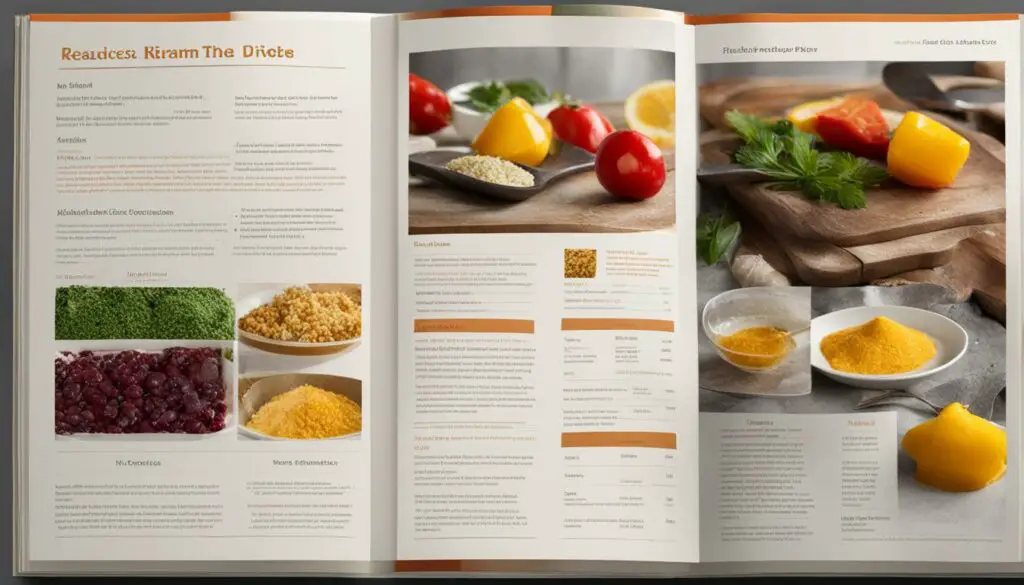
Recipe formatting can vary depending on the author’s preference or the publisher’s style. While many recipes use the term “divided” to indicate divided ingredients, others may present the information differently. Some recipes may explicitly state the divided amounts, such as “1/2 cup plus 1/4 cup flour,” while others may give instructions like “add half of the milk and bring to a simmer,” followed by “add the remaining milk.”
The key is to carefully read and understand the recipe’s formatting and ingredient usage to achieve the desired outcome. Pay attention to the specific instructions provided, as they will guide you on how to use the divided ingredients effectively.
Whether the recipe explicitly states the divided amounts or provides instructions for when to add the divided ingredient, the goal is to ensure that each component is used correctly in the cooking process.
Example of Recipe Formatting Variation
“Add half of the diced tomatoes and simmer for 10 minutes. Then, add the remaining tomatoes and continue cooking for another 5 minutes.”
In this example, the recipe does not use the term “divided” but instead provides clear instructions on when to add specific portions of the ingredient. By following these instructions, you can achieve the intended flavor and texture in the final dish.
Example of Recipe Formatting Variation
“Add 1/2 cup of grated Parmesan cheese to the sauce mixture. Reserve the remaining 1/4 cup for garnishing.”
In this example, the recipe specifies both the divided amounts and their respective uses. This formatting makes it easy to understand how the ingredient should be divided and incorporated into the recipe.
By adapting to different recipe formatting styles, you can confidently navigate the use of divided ingredients and create delicious dishes every time.
Common Divided Ingredients in Recipes
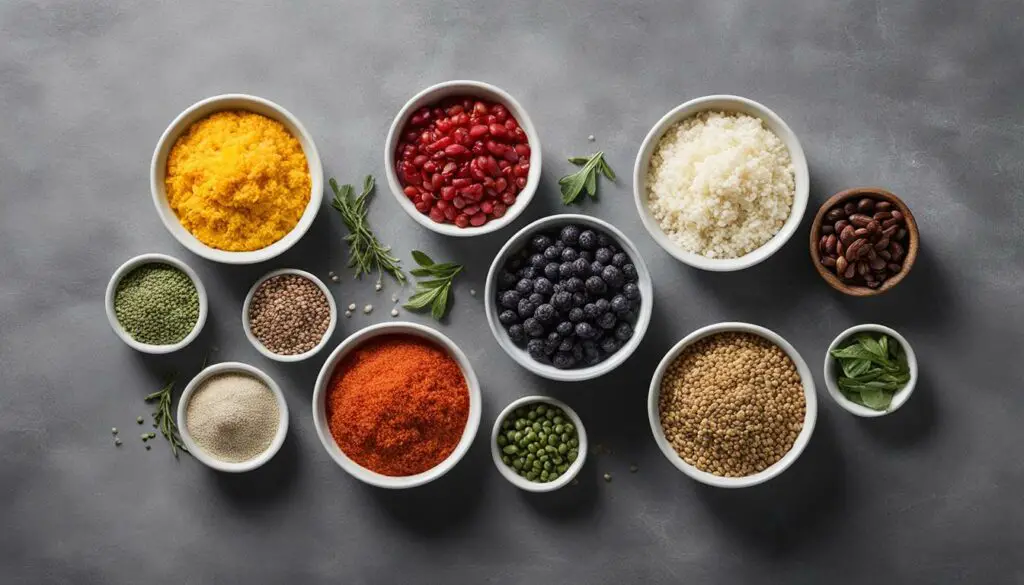
When it comes to divided ingredients in recipes, there are several common examples that you may come across. These ingredients are often divided to layer flavors or create a balance in the dish. Understanding these common divided ingredients can help you navigate recipes and ensure that you use them effectively.
Here are some of the most frequently found divided ingredients:
- Cheese: In recipes like lasagna or casseroles, cheese is often divided and used at different stages. It can be added as a layer in the middle and on top of the dish for a melty and delicious result.
- Onions: Onions are another ingredient that you may find divided in recipes. They can be sautéed or caramelized separately and added at different times to create layers of flavor.
- Butter: Divided butter is commonly used for baking recipes. It may be melted and incorporated into the batter, while some is reserved for coating the baking pan or adding a finishing touch.
- Spices: Spices like paprika, chili powder, or cumin can be divided and added at various stages of cooking to build depth of flavor. This technique enhances the overall taste of the dish.
- Herbs: Fresh herbs are often divided in recipes to maximize their flavor. Some may be used during cooking, while others are reserved for garnishing just before serving.
By familiarizing yourself with these common divided ingredients, you can confidently tackle recipes that call for them and create meals with delicious layers of flavor.
Importance of Reading the Entire Recipe
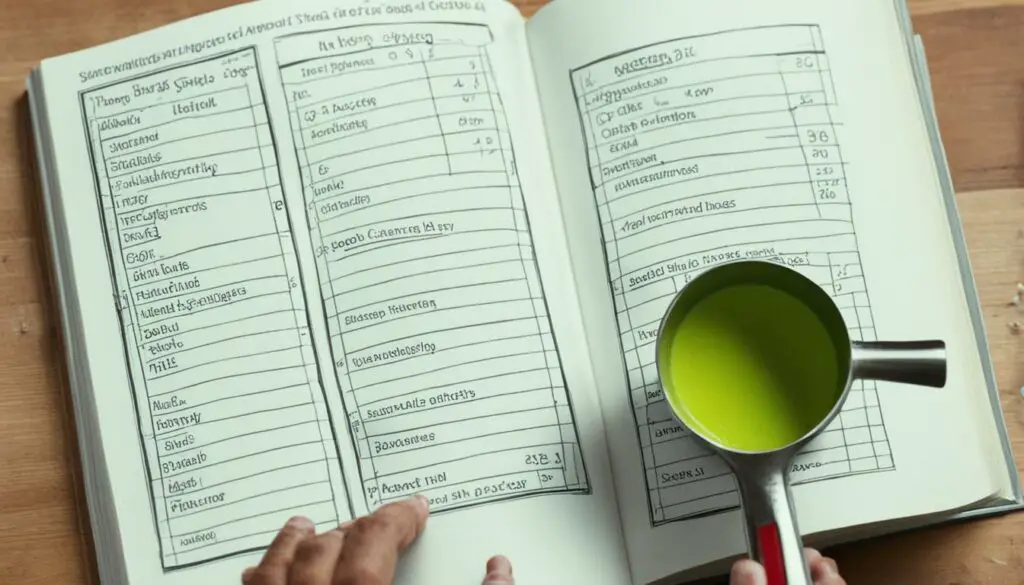
One of the most crucial aspects of effectively using divided ingredients is taking the time to read the entire recipe before you begin the cooking process. By doing so, you can ensure that you fully understand the recipe instructions, including the specific usage of divided ingredients, and plan your cooking accordingly. Reading the entire recipe allows you to avoid surprises and make sure that you use the divided ingredient correctly, ultimately resulting in a successful and delicious dish.
When you read the entire recipe before starting, you gain a comprehensive understanding of the step-by-step instructions. This allows you to familiarize yourself not only with the usage of divided ingredients but also with other critical details such as required cooking techniques and equipment. By having a clear grasp of the recipe, you can anticipate the necessary actions and prepare yourself accordingly.
Not reading the entire recipe before starting can lead to mistakes or oversights in using divided ingredients. You may miss important instructions on when and how to use the divided ingredient, which can negatively impact the outcome of your dish. It’s like embarking on a journey without a map, and you may find yourself lost or confused along the way.
Furthermore, when you read the entire recipe, you set realistic expectations for the cooking process. You understand the time commitments, the sequence of steps, and any necessary preparations. This helps you plan your cooking efficiently and ensures a smoother experience in the kitchen.
Reading the entire recipe also allows you to make any necessary adjustments or substitutions if needed. If you have dietary restrictions or preferences, you can assess the recipe in advance and make appropriate modifications. This helps you customize the dish to your liking while still following the basic structure and intent of the recipe.
By making it a habit to read the entire recipe before you start cooking, you empower yourself with knowledge and understanding. You become confident in your cooking abilities and can approach the recipe with a sense of clarity and purpose. It sets you up for success and greatly increases the likelihood of achieving the desired results.
Reading the entire recipe is like laying the foundation for a well-executed dish. It ensures that you have a clear understanding of the instructions, cooking techniques, and the proper usage of divided ingredients. With this knowledge in hand, you can confidently embark on your culinary journey and create a flavorful masterpiece.
Divided Ingredients in Baking Recipes
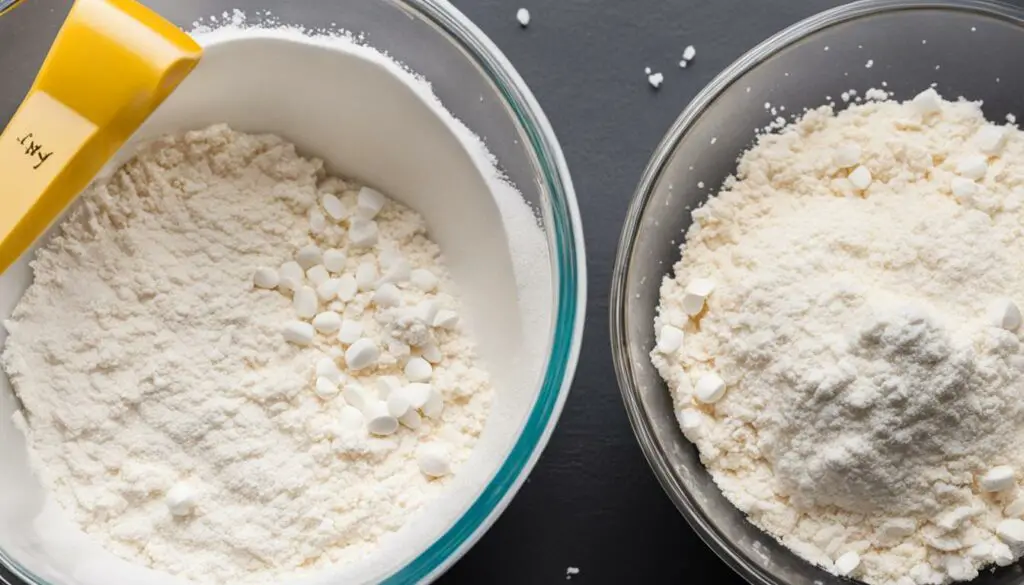
Baking recipes often require precise measurements and specific ingredient usage, making divided ingredients a common feature. The careful integration of divided ingredients ensures accurate proportions and helps achieve the desired outcome in the final baked goods.
For example, a cake recipe may call for “2 cups of sugar, divided.” In this case, a portion of the sugar will be used in the batter, while the rest will be reserved for a topping or filling. Following the instructions for divided ingredients is particularly important in baking to maintain the balance of flavors and textures.
When using divided ingredients in baking, be sure to read the recipe thoroughly and understand how the ingredient will be divided and used in different parts. This will help you accurately measure and incorporate the divided ingredient at the appropriate stages of the baking process.
Baking is a precise science, and any deviations from the recipe instructions can affect the outcome. By following the use of divided ingredients in baking recipes, you can ensure that your baked goods turn out as intended and impress with their delicious flavors and textures.
Benefits of Using Divided Ingredients
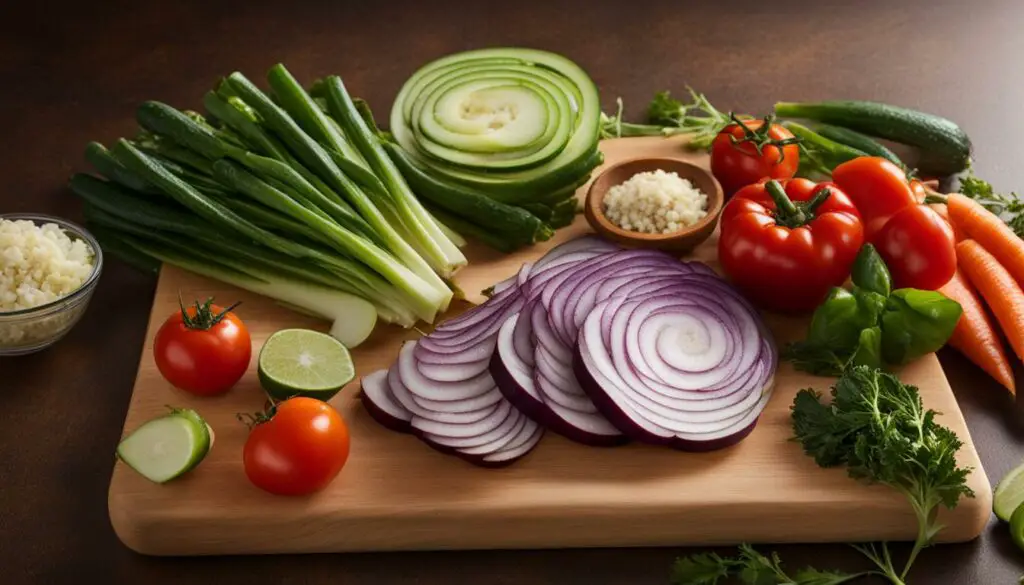
The use of divided ingredients in recipes offers several benefits. By incorporating divided ingredients, you can elevate the flavors and textures of your dishes, resulting in a more dynamic and well-rounded culinary experience.
One of the key advantages of using divided ingredients is the ability to layer flavors. By adding the divided ingredient at different stages of the cooking process, you can build complexity and depth in the dish. This technique enhances the overall taste profile and creates a more exciting dining experience for you and your guests.
Additionally, the use of divided ingredients allows for precise measurements. By carefully dividing an ingredient and using it in specific quantities throughout the recipe, you can ensure that every component is properly seasoned or flavored. This attention to detail contributes to the overall harmony and balance of the dish, resulting in a more satisfying culinary outcome.
Another benefit of incorporating divided ingredients is that it helps streamline the recipe’s ingredient list. Instead of listing the ingredient multiple times with varying amounts, the use of “divided” in the recipe allows for a more concise presentation. This makes it easier for home cooks to follow and understand the recipe, enhancing the overall cooking experience.
In summary, the use of divided ingredients brings numerous benefits to your recipes. It allows for layering flavors, ensures precise measurements, and streamlines the ingredient list for easier comprehension. By embracing divided ingredients, you can enhance the overall cooking experience and elevate the final dish to new culinary heights.
How Divided Ingredients Enhance Recipe Structure
Divided ingredients play a crucial role in the structure of a recipe. They allow recipe writers to create a logical flow and build flavors throughout the cooking process. By dividing an ingredient, the recipe becomes more dynamic and layered, resulting in a more complex and flavorful dish.
When a recipe incorporates divided ingredients, it provides opportunities for layering and adding depth to the flavors. For example, adding a divided amount of spices at different stages of the cooking process can enhance the overall taste and aroma of the dish.
The careful integration of divided ingredients ensures that each component receives the right amount of flavor and contributes to the overall balance of the recipe. It allows for the gradual development of flavors, resulting in a more harmonious and well-rounded final dish.
Understanding and using divided ingredients effectively requires attention to detail and following the recipe’s instructions. By properly utilizing these ingredients, you can achieve a well-structured and delicious final dish that showcases the recipe’s intended flavors and textures.
By incorporating divided ingredients into your cooking, you can elevate the structure of your recipes and create a more engaging and satisfying culinary experience. So the next time you come across a recipe that calls for divided ingredients, embrace the opportunity to add complexity and depth to your dishes.
Example Recipe Structure with Divided Ingredients:
| Ingredient | Amount | Usage |
|---|---|---|
| Garlic | 4 cloves | Divided: 2 cloves minced, 2 cloves sliced |
| Onion | 1 medium | Divided: 1/2 onion finely chopped, 1/2 onion sliced |
| Butter | 6 tablespoons | Divided: 4 tablespoons for sautéing, 2 tablespoons for finishing |
Using divided ingredients allows for a gradual layering of flavors, creating a well-structured and delicious dish.
Conclusion
Incorporating divided ingredients into recipes adds a layer of complexity and depth to the final dish. By dividing ingredients and using them in separate ways throughout the cooking process, chefs and home cooks can achieve unique flavor profiles, enhanced layering, and intriguing textural variations.
When working with recipes that call for divided ingredients, it is crucial to read the entire recipe before starting. Understanding how the ingredients are divided and following the instructions accurately ensures that the dish turns out as intended.
Divided ingredients not only enhance the structure of a recipe but also contribute to a well-rounded and flavorful final dish. Whether it’s cheese, onions, butter, or spices, carefully utilizing divided ingredients allows each component to shine and create a harmonious balance of flavors. So the next time you come across a recipe with divided ingredients, embrace the opportunity to create a culinary masterpiece that tantalizes the taste buds.
FAQ
What does “divided” mean in a recipe?
When a recipe says “divided” after an ingredient, it means that the ingredient will be used in multiple places throughout the recipe instructions.
Why do recipe writers use the term “divided”?
Recipe writers use the term “divided” to indicate that an ingredient will be used in different amounts and at different times in the cooking process. It helps to streamline the ingredient list and make it more concise.
Can you provide examples of divided ingredients in recipes?
Some examples of divided ingredients in recipes include Parmesan cheese, butter, spices, herbs, onions, and other flavor-enhancing ingredients.
How should I use divided ingredients in a recipe?
To use divided ingredients in a recipe, it is important to read the entire recipe before starting and follow the instructions carefully. Pay attention to the specific amounts and steps at which the divided ingredient should be added.
Any tips for handling divided ingredients?
When handling divided ingredients, it is recommended to measure out the total amount before dividing it according to the recipe’s instructions. Taking your time and ensuring accuracy in measurement is essential.
How can recipe formatting vary when it comes to divided ingredients?
Recipe formatting can vary, but most recipes use the term “divided” to indicate divided ingredients. Some recipes may explicitly state the divided amounts, while others may give instructions like “add half of the ingredient” and “add the remaining ingredient.” It’s important to read and understand the recipe’s formatting and ingredient usage.
What are some benefits of using divided ingredients?
Using divided ingredients allows for layering flavors and textures, enables precise measurements, and contributes to a well-rounded and flavorful final dish.
How do divided ingredients enhance recipe structure?
Divided ingredients help create a logical flow and build flavors throughout the cooking process. They provide opportunities for layering and adding complexity to the dish, ensuring each component receives the right amount of flavor and contributes to the overall balance of the recipe.
Why is it important to read the entire recipe when using divided ingredients?
Reading the entire recipe before starting allows you to understand the instructions, including the use of divided ingredients, and plan accordingly. It helps you avoid surprises and ensure that you use the divided ingredient correctly.
How are divided ingredients commonly used in baking recipes?
Divided ingredients are commonly used in baking recipes to ensure precise measurements and specific ingredient usage. They are often divided to achieve desired proportions, flavor distribution, and consistency in the final baked product.
What is the importance of using divided ingredients in recipes?
Using divided ingredients enhances the overall cooking experience by providing opportunities for layering flavors, ensuring precise measurements, and creating a balanced and well-structured final dish.

